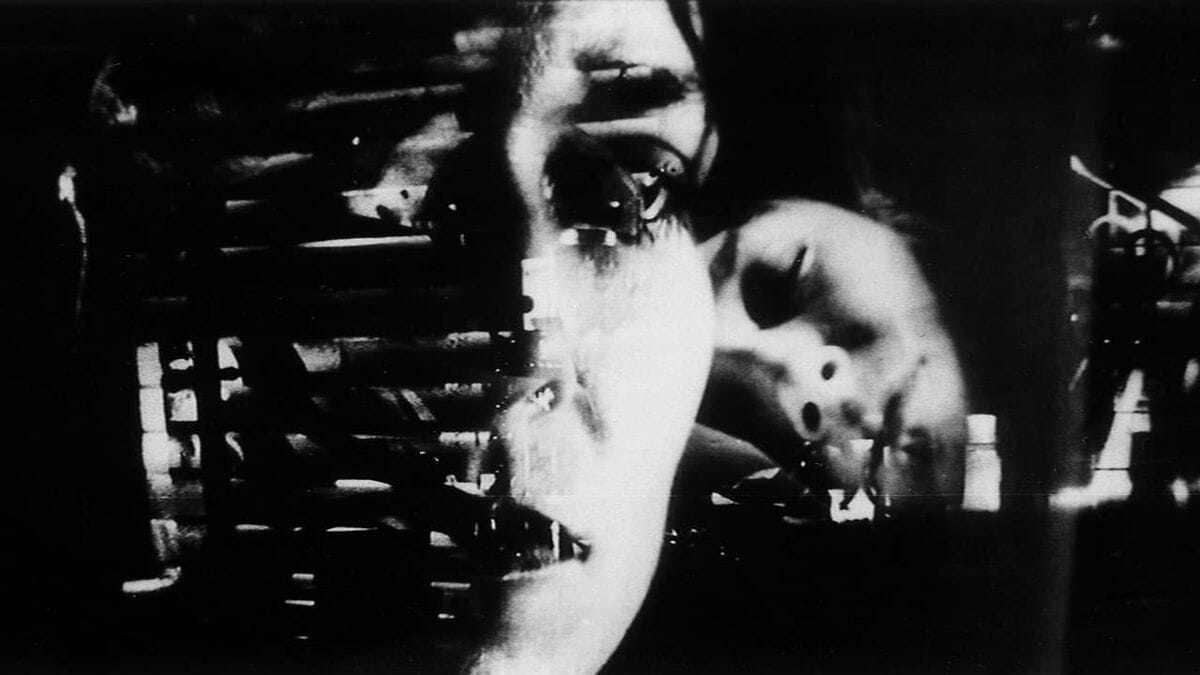"Film is no longer what it should've been"

A manifesto for experimental film, inspired by the work of Light Cone seen at IndieLisboa
When I studied film at university, a teacher insisted that we should write one, maybe even two, manifestos in our lives. At the time, it seemed glib, a playful roast about the passions of youth and the childish belief that film had the power to change the world. Ten years have passed since my time at university, and it's only recently that I've felt any urge to put down thoughts on the kind of cinema I believe in. I've always considered myself passive and indecisive, ill-suited for dogmatic screeds. But what is a film manifesto if not a little impulsive and messy?
Last week I attended IndieLisboa. When I pitched this essay, it was meant to be, in part, a look into the 40th anniversary of Light Cone, a French organisation dedicated to promoting, restoring and preserving experimental cinema. While they work primarily as a distributor, Light Cone also offers residencies to artists working in multimedia experimental fields and hosts guest-curated series drawn from their expansive collection. IndieLisboa programmed a series from Light Cones's 6000 film collection. The films ranged from early twentieth-century classics such as Germaine Dulac's Themes and Variations to daring contemporary works like FragMANts (2019) made by the feminist film collective, Neozoon. The films were rich, playful, challenging, terrible, ugly, and beautiful.
It was invigorating to experience film with little to no commercial aspirations in a cinematic landscape dominated by corporate powers. The idea of writing about Light Cone was that one of the necessary tenets in creating an alternative film image was a need for community, and Light Cone (even with its problems over the years) represents one possibility for new film history and an imagined film future.
The experimental film does not only encompass audiovisual practices that explore non-narrative or avant-garde techniques; it also often embraces new methods of creation and distribution. While all forms of cinema require community in one shape, the experimental film does not exist without community. It's the only subsection of cinema more interested in people than in customers.
In an age where three studios dominate most screens in the western world, it's easy to fall for the impulse of mildly praising anything that veers from the norm. The fact that a movie like Doctor Strange in the Multiverse of Madness can inspire writers and audiences to commend (or condemn) the film for breaking away from conventions reflects an audience catered to so completely that they see innovation, risk and personality where there is none.
A push-back against these soulless mega-Blockbusters often turns to meek festival favourites, many of which exist solely to populate the festival industrial complex - movies that say nothing and adopt ponderous seriousness. Visually and ideologically bland, they recycle the tropes and conventions of previous generations of festival films without understanding their value. Most are forgettable, though some are also even critically and financially successful.
In 2015, I attended a talk given by Pierre Rissient, who decried this kind of cinema, and it resonated deeply. Rissient, who died in 2018, was a French producer, publicist and "festival" scout. Even in his late 70s, he never lost his bite and was openly critical of the selection at major film festivals worldwide. From Godard to Jane Campion to King Hu, the movies he championed transcended the festival environment. They were real movies, real works of art that echoed through culture and history. Even if the public didn't know their names, it was almost as if their work had pierced the collective unconscious — their sounds and images able to alter the fabric of reality itself.
Films (and more broadly, "screens”) can still transform reality. We've allowed corporations invested in keeping us logged on to take the wheel. Back in 1999, when The Matrix was first released, the Wachowskis argued that we are pacified to keep us plugged into the Matrix and subjugated to those who exploit us. Twenty years later, with the release of The Matrix Resurrections, they amended parts of this theory; anger and frustration are what keep us coming back. The toxicity of social media and its necrotic grip on contemporary thought speaks to the power of screens and images to transform our reality, often for the worse. To free ourselves, we need to move forward with love and humility.
We need to embrace art made by people, not industries and algorithms. We need to create communities that are open, transformative and global. When I speak of love, I don't mean butterflies and rainbows, but rather a sense of responsibility and care for the medium and its surrounding communities. Unlike the fetishistic cinephilia enamoured with the medium itself, the love I'm advocating for is a love of people — the people who make, program and watch cinema. By necessity, this love should be sustained through dialogue, criticism and a reimagining of the past, present and future. It should work to dismantle traditional hierarchies and power structures that keep us docile, captive, and in conflict with one another.
Light Cone represents just one ideal that still takes shape from the past. Yet its prioritisation of experimental film highlights an essential need within cinema. To imagine new ways of seeing, we need to reimagine film history from new points of view; whether they adopt experimental forms, decolonised practices or are anti-capitalist in nature, films that fall into the broad experimental category are often in tension with mainstream and commercial narratives. Experimental cinema is where filmmakers are allowed to be their most unencumbered and where power structures surrounding the distribution and celebration of new voices can be reimagined to suit a new audience. Within the confines of experimental cinema is an opportunity to create films by and for communities who traditionally could not advocate for themselves. The experimental film represents a utopia within cinema as an art form.
And though it's worth noting that even the dominant histories of the experimental film have neglected marginalised voices, the salvation of cinema as an art form nonetheless exists outside the confines of capital and in the realm of the revolutionary underground. In reimagining these histories, we can reimagine our relationships with each other. If we can successfully pierce the global unconscious with new voices, we can free ourselves from the perception of cinema as a medium for the rich and powerful. Cinema has a long history of being a history of and for the people, an integral part of important social movements and programs. We should be doing what we can to maintain that identity and create new communities that allow cinema to flourish, transform and thrive.
To love film is to love people.
----
Embracing the messiness of this project, some brief thoughts inspired by films screened as part of the Light Cone series;
- Two films playing in the Eroticism and Suggestion program, Sexe-Thym (Nathalie Harran, 1993) and Solitary Acts #4 (Nazli Dincel, 2015), use play and explicitness to deconstruct the power-grip of the male gaze. In Harran's one-minute short, a thyme branch is pressed against a vulva. It's a funny play on words but also feels critical of the dominant theoretical framework that cinema is "sculpting in time" and sexual in nature.
In Solitary Acts #4, Dincel also features a close-up of a vulva with writing scrawled across the screen. We watch as a woman's hand touches herself for most of the running time. As memories of self-discovery and shame are confessed, Britney Spears's Oops! I did it Again plays on the soundtrack. It's critical and autobiographical but also funny.
Films do not need to be serious. In fact, more should be playful.
- With only three films in a selection of over thirty not to be made in Europe or the USA, the programmers allowed the personal to override the global. When we discuss the importance of diversifying and celebrating new cinema, it applies to the filmmakers and the programmers, critics, distributors, and crew working in cinema.
- In Eût-elle été criminelle… (2006), director Jean-Gabriel Périot uses rarely seen footage of the liberation of Paris, in which women accused of having relationships with German men are publicly humiliated. Intercut with more familiar WW2 imagery, the film showcases the unreliability and incompleteness of archival images. We extend more empathy to inventions and recreations than to real people. As La Marseillaise repeats on the soundtrack, we watch different processions; from soldiers in battle to women lined up to have their hair shaved. Other films come to mind; the flashbacks of Hiroshima, mon amour, and Joan of Arc's death march in La Passion de Jeanne D'arc. What does it say that we are consistently moved to erase or downplay the full ugliness of war?
Peter Tscherkassky's Dream Work, working with found footage, also deconstructs images to allow us to imagine them anew. He invokes the "excessive looking" built into the medium; the screen is like a window into our dreams, but it's unclear who is in charge.
- Found Footage movies show you don't need a camera to make a movie.
- "Film is no longer what it should've been," No Film (Michael Brynntrup, 2000)




